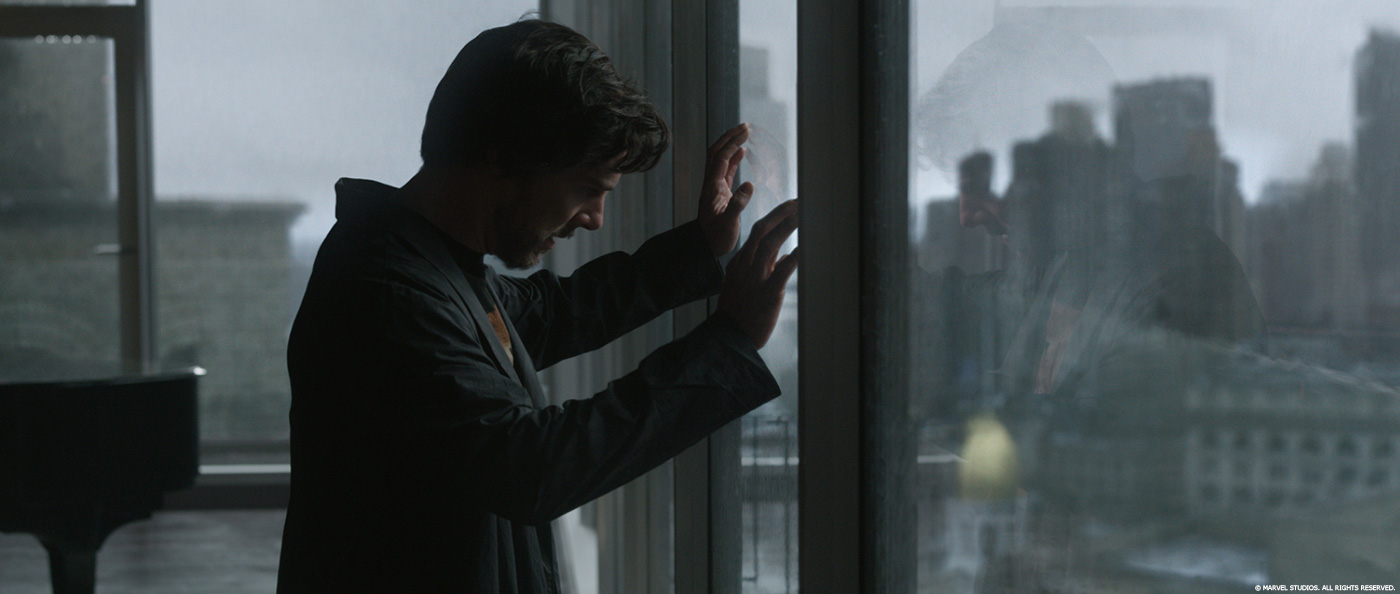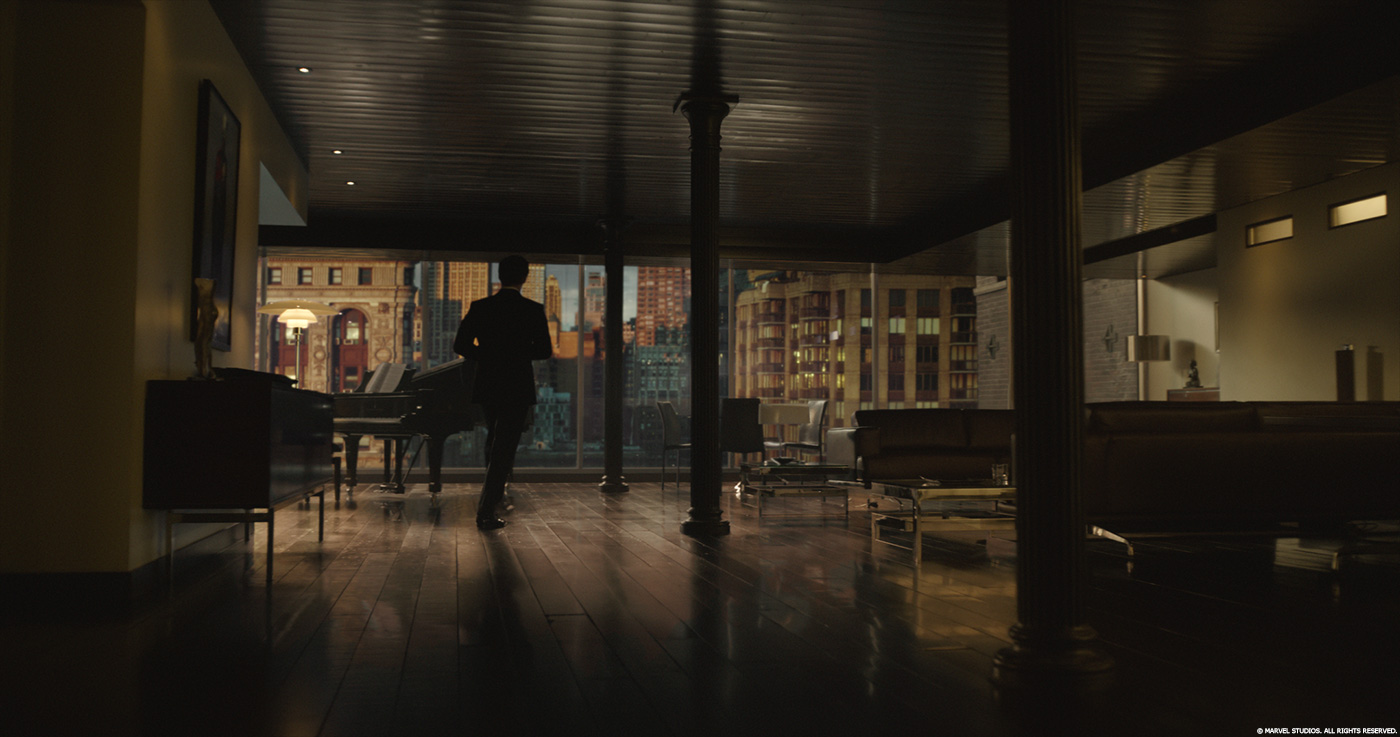With DOCTOR STRANGE, the team of Crafty Apes is back in the Marvel universe after their work on CAPTAIN AMERICA: CIVIL WAR and AVENGERS: AGE OF ULTRON. Crafty Apes was founded in 2011 by Chris LeDoux, Tim LeDoux and Jason Sanford.
Can you tell us more about your studio Crafty Apes?
Crafty Apes is a VFX studio with a strong focus on VFX supervision and specifically 2d compositing. We were all working in LA when many studios were closing and many of our coworkers moving on to other locations. We saw an opportunity to stick around and make something of our own. For Chris, Robin, and Tim, their backgrounds were rooted in the 2d compositing world. Focusing on compositing mitigated risk for our new business. Jason helped make that happen as we pursued work that would play to our strengths and allow us to do our most impressive work.
We have since expanded our operations to both LA and Atlanta.
How did you got involved on this show?
We have done a few shows with Marvel now and we were lucky enough to be involved in another that needed green screen and compositing work. The teams Marvel puts together are great to work with, so when they call, we answer.
How was this collaboration with director Scott Derrickson and VFX Supervisor Stephane Ceretti?
The supervision at Marvel is always top notch in our experience and this show was no different. We were given well thought artistic direction on lighting and integrating our environments to taste.
What was their approaches and expectations about the visual effects?
Many of the green screen shots we assisted on had sister shots completely in camera. The expectation was to match these shots seamlessly. Lighting may not always match and many shots had to be relit in comp to make that happen. Anything that jumps shot to shot must be dealt with. We were pushed to make shots flow together and not just A over B.
What are the sequences made by Crafty Apes?
We were lucky enough to have bits of pieces of many sequences throughout the film. Our main sequence though was “CUR” where we added a rainy city backdrop behind the window in Dr. Strange’s apartment. We also added digital backdrops to many shots in the hospital scenes.
How did you organize the work between you?
Our workforce is now weighted to our Atlanta location. Our supervisor Robin Graham led the team there with the bulk of the work, while Jason Sanford and Tim LeDoux facilitated artists and interfaced the project out of the LA office. Of course with any project involving multiple locations it just all comes down to constant communication to make sure everything falls in to place.
What was your approach to created the huge New York backgrounds?
A huge pano was provided to us by production and from this we could break up the background into many layers in order to add parallax and movement within the city. Things like animated highlights on the windows, moving cars, billowing smoke, flying birds and splashing water all helped to bring the background “alive” and help sell the scene.
Did you received specific indications and references?
We received the photography of the environment from production, but apart from wanting the backdrops to feel “alive” production really let us be creative.
Can you explain in details about the creation of these environments?
I can break up the environments into two sections. The far background and the details on the glass. The far background was split up in to layers and projected on to simple geometry. Then we could move a camera around in Dr. Strange’s apartment and get realistic parallax and perspective on the cityscape. At that point we could also add smoke from chimneys, birds in the distance and even full 3d reflections of this environment in the texture floor of Strange’s apartment and simulated highlights moving across the windows of buildings.
The second part of the shot was dealing with the glass of the window and the water interaction on the glass. For this we were lucky enough to have small sections of the plate where water was actually hitting the glass and giving us realistic refraction and distortion. This was a little hard to key through, but it also gave us great reference for how to build our own water interaction. We generated a sheeting water texture and then used that to add highlights, refractions, and defocus to the BG based on the angle and the lighting. The key here was to base everything off of queues we were already getting from the raw plate and just extend it out to the rest of the window. Then behind the glass we added a couple more layers of rain and atmosphere.
How did you handle the challenge of the keying of such large glass and especially with the rain on it?
With a clean and even green screen subtractive keyers (ibk, keylight) can work wonders to bring out reflections and fg details like rain. It is when those screen are compromised that the headaches begin. We had a lot of clean screens to work with. The job from there is to stick to the program and quality control to make sure nothing gets lost.
Can you tell us more about the lighting challenges?
Sometimes lighting need to change! With backgrounds often in flux it was not uncommon for fg lighting to require extreme surgery. The challenge here is to know how far you can take it, and do it in such a way that preserves as much detail and cleanliness as the original. A relight shot for example might also require noise reduction.
Can you reveal your compositing tricks for this kind of shots?
Show us yours and come work with us 🙂 No, but the real trick for us is to aim for consistency across the many shots and artists involved and to not be afraid to use a heavy, but technically clean hand in obtaining the desired look. Again communication is king. Artists would discuss techniques and tricks all the time and then roll out those findings to the rest of the sequence. At the end of the day the whole sequence has to be detailed and polished together so that everything falls in to place as a whole and not JUST scrutinized at the shot level.
Was there a specific shot that prevented you from sleep?
DOC040! This shot underwent a range of looks and some extreme relighting. Battling reflections and set lighting kept us busy. And the end of the day the shot went through multiple plate and background reconstructions in order to really hone in on the perfect look.
What do you keep from this experience?
We expanded our artist pool for this show and it was a good experience in getting everyone on the same page for our expectation of quality. We also developed some sheeting water techniques that we think will really off in the future with other shows.
How long have you worked on this film?
We started June 1st and finaled our last shot a little less than 4 months later.
How many shots have you done?
Around 120 shots.
What was the size of your team?
14 artists and 2 supervisors spread across our Atlanta and Los Angeles offices.
What is your next project?
We can’t say! But we have about 6 shows in progress right now across our two facilities.
What are the four movies that gave you the passion for cinema?
INDIANA JONES AND THE LAST CRUSADE (for Tim) and ALIENS (for Robin).
A big thanks for your time.
// WANT TO KNOW MORE?
– Crafty Apes: Dedicated page about DOCTOR STRANGE on Crafty Apes website.
© Vincent Frei – The Art of VFX – 2016







